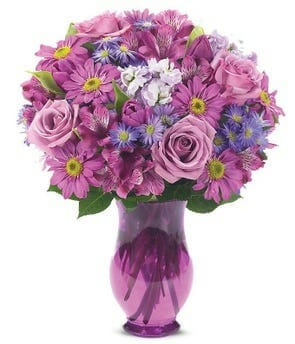The Enchanting World of Lavender Flowers
Everything You Need To Know

Unveiling the Allure of Lavender Flowers
Lavender flowers are one of nature’s most exquisite gifts, boasting a captivating hue and an unmistakable aroma. The lavender plant, known scientifically as Lavandula, belongs to the mint family and has over 40 known species. This perennial favorite is not only celebrated for its beauty but also for its diverse uses and health benefits.
Origin and History of Lavender
Originating from the Mediterranean region, the Middle East, and India, lavender’s history goes back some 2,500 years. The ancient Romans and Greeks held lavender in high esteem, utilizing it for bathing, cooking, and as a holy herb. They also discovered that lavender had soothing properties and used it for treating wounds. The plant’s name “Lavender” originates from the Latin word “lavare,” which means “to wash.” Over the centuries, the cultivation of lavender spread across Europe, eventually reaching North America and Australia.
Characteristics of Lavender Flowers
Lavender plants are small, bushy shrubs that grow anywhere from 8 inches to 2 feet tall. The narrow leaves are slightly fuzzy and grey-green in color. The flower spikes, a bluish-purple, rise above the foliage during the blooming season in summer, attracting a symphony of bees and butterflies.
Lavender is famous for its unique, sweet, and enchanting aroma. Its fragrance has calming properties, making it a staple in aromatherapy and many perfumes, lotions, soaps, and candles.
Growing Lavender
Lavender plants favor full sun exposure and well-drained soil. They are drought-tolerant and thrive in warm, sandy, or gravelly soils with a neutral to slightly alkaline pH. Lavender plants require good air circulation, and they should be pruned every year to keep them compact.
The Uses and Benefits of Lavender
Lavender’s uses are as diverse as its history. From aromatherapy to culinary delights, lavender’s impact is widespread. In aromatherapy, lavender is used for its calming effects to alleviate stress and promote sleep. Topically, lavender oil helps heal minor burns and wounds; it’s also used for treating skin conditions like acne, eczema, and wrinkles.
Culinary-grade lavender adds a unique flavor to dishes, both sweet and savory. You’ll find it in recipes for cookies, ice cream, chocolate, jams, teas, and even meat rubs.
Medicinally, lavender has been used for centuries. Today, it’s used in herbal remedies for ailments like anxiety, insomnia, depression, and digestive issues.
Lavender in the Garden
In landscape design, lavender is a versatile plant that serves multiple purposes. It can be used in flower beds, rock gardens, herb gardens, or as a fragrant hedge. When planted near patios or windows, the soothing fragrance of lavender can waft into your home, creating a calming ambiance.
Lavender flowers, with their enchanting beauty and soothing fragrance, are more than just a visual delight. Their diverse uses and benefits make them a must-have in any garden. From their rich history to their modern applications in aromatherapy, culinary creations, and home décor, lavender flowers truly offer an immersive sensory experience. Whether you grow them in your garden or enjoy their many derivatives, there’s no denying that lavender flowers can add a touch of elegance and tranquility to any setting.
view all lavender flowers



